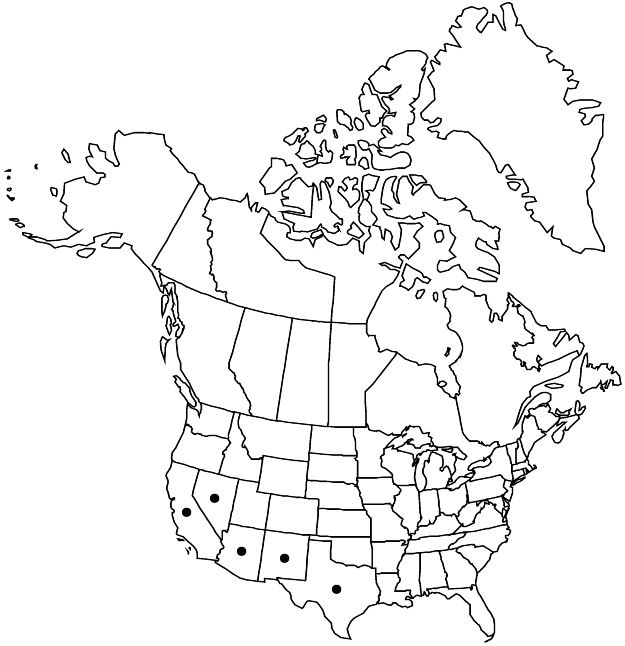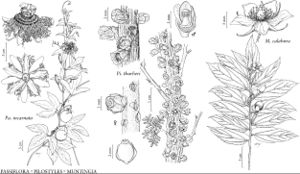Difference between revisions of "Pilostyles thurberi"
Pl. Nov. Thurb., 326. 1854.
Illustrated
Synonyms: Pilostyles covillei Rose
Treatment appears in FNA Volume 6. Treatment on page 184.
FNA>Volume Importer |
imported>Volume Importer |
||
| (6 intermediate revisions by 2 users not shown) | |||
| Line 9: | Line 9: | ||
|special_status={{Treatment/ID/Special_status | |special_status={{Treatment/ID/Special_status | ||
|code=F | |code=F | ||
| − | |label= | + | |label=Illustrated |
}} | }} | ||
|basionyms= | |basionyms= | ||
| Line 15: | Line 15: | ||
|name=Pilostyles covillei | |name=Pilostyles covillei | ||
|authority=Rose | |authority=Rose | ||
| + | |rank=species | ||
}} | }} | ||
|hierarchy=Apodanthaceae;Pilostyles;Pilostyles thurberi | |hierarchy=Apodanthaceae;Pilostyles;Pilostyles thurberi | ||
| Line 30: | Line 31: | ||
|elevation=100–1000 m | |elevation=100–1000 m | ||
|distribution=Ariz.;Calif.;Nev.;N.Mex.;Tex.;Mexico. | |distribution=Ariz.;Calif.;Nev.;N.Mex.;Tex.;Mexico. | ||
| − | |discussion=<p>Documented hosts from the flora area are Dalea formosa Torrey, D. frutescens A. Gray, Psorothamnus emoryi Rydberg, and P. polydenius (Torrey) Rydberg (Fabaceae). Other species in these genera apparently serve as hosts in Mexico. The taxonomic limits of Pilostyles thurberi are poorly understood. It is difficult to circumscribe the host range of this taxon.</p> | + | |discussion=<p>Documented hosts from the flora area are Dalea formosa Torrey, D. frutescens A. Gray, Psorothamnus emoryi Rydberg, and P. polydenius (Torrey) Rydberg (Fabaceae). Other species in these genera apparently serve as hosts in Mexico. The taxonomic limits of <i>Pilostyles thurberi</i> are poorly understood. It is difficult to circumscribe the host range of this taxon.</p> |
|tables= | |tables= | ||
|references= | |references= | ||
| Line 39: | Line 40: | ||
-->{{#Taxon: | -->{{#Taxon: | ||
name=Pilostyles thurberi | name=Pilostyles thurberi | ||
| − | |||
|authority=A. Gray | |authority=A. Gray | ||
|rank=species | |rank=species | ||
| Line 53: | Line 53: | ||
|publication title=Pl. Nov. Thurb., | |publication title=Pl. Nov. Thurb., | ||
|publication year=1854 | |publication year=1854 | ||
| − | |special status= | + | |special status=Illustrated |
| − | |source xml=https:// | + | |source xml=https://bitbucket.org/aafc-mbb/fna-data-curation/src/2e0870ddd59836b60bcf96646a41e87ea5a5943a/coarse_grained_fna_xml/V6/V6_333.xml |
|genus=Pilostyles | |genus=Pilostyles | ||
|species=Pilostyles thurberi | |species=Pilostyles thurberi | ||
Latest revision as of 22:20, 5 November 2020
Bracts 4–7, imbricate, circular to ovate, 1–1.5 mm. Flowers brown or maroon, 1.5–2 mm; sepals similar to bracts; stylar column with apex expanded to 1 mm diam., papillose along margins; anthers 15–21, in ring of ca. 3 rows; ovules mostly 120–200. Seeds mostly 120–200. 2n = 60 + 0–1B.
Phenology: Flowering Jan–May.
Habitat: Open desert scrub
Elevation: 100–1000 m
Distribution

Ariz., Calif., Nev., N.Mex., Tex., Mexico.
Discussion
Documented hosts from the flora area are Dalea formosa Torrey, D. frutescens A. Gray, Psorothamnus emoryi Rydberg, and P. polydenius (Torrey) Rydberg (Fabaceae). Other species in these genera apparently serve as hosts in Mexico. The taxonomic limits of Pilostyles thurberi are poorly understood. It is difficult to circumscribe the host range of this taxon.
Selected References
None.
Lower Taxa
None.
